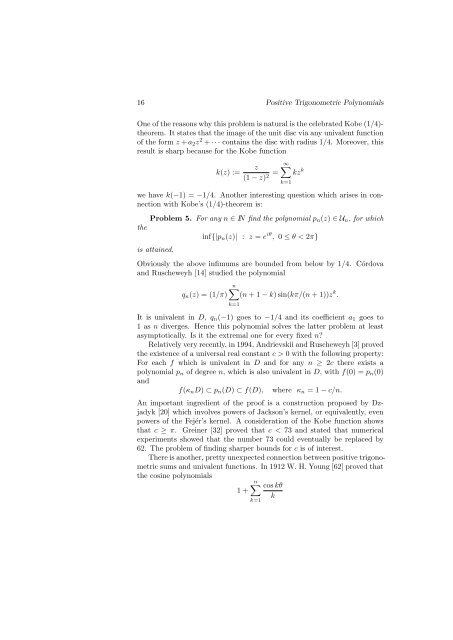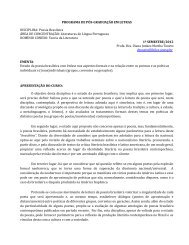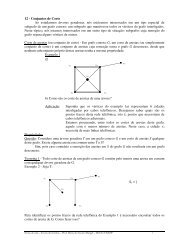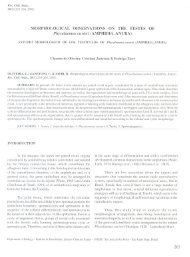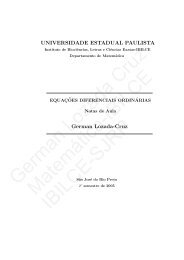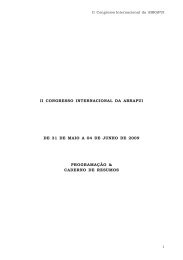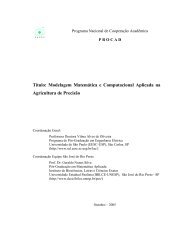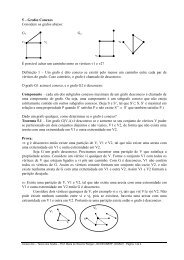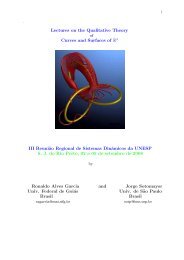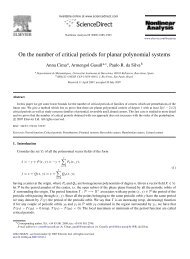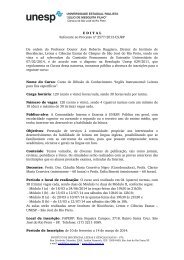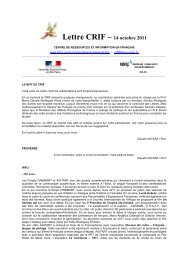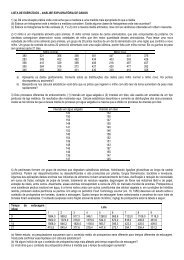Extremal Positive Trigonometric Polynomials - CiteSeerX
Extremal Positive Trigonometric Polynomials - CiteSeerX
Extremal Positive Trigonometric Polynomials - CiteSeerX
You also want an ePaper? Increase the reach of your titles
YUMPU automatically turns print PDFs into web optimized ePapers that Google loves.
16 <strong>Positive</strong> <strong>Trigonometric</strong> <strong>Polynomials</strong><br />
One of the reasons why this problem is natural is the celebrated Kobe (1/4)-<br />
theorem. It states that the image of the unit disc via any univalent function<br />
of the form z + a 2 z 2 + · · · contains the disc with radius 1/4. Moreover, this<br />
result is sharp because for the Kobe function<br />
z<br />
∞<br />
k(z) :=<br />
(1 − z) 2 = ∑<br />
kz k<br />
we have k(−1) = −1/4. Another interesting question which arises in connection<br />
with Kobe’s (1/4)-theorem is:<br />
Problem 5. For any n ∈ IN find the polynomial p n (z) ∈ U n , for which<br />
the<br />
inf{|p n (z)| : z = e iθ , 0 ≤ θ < 2π}<br />
is attained.<br />
Obviously the above infimums are bounded from below by 1/4. Córdova<br />
and Ruscheweyh [14] studied the polynomial<br />
q n (z) = (1/π)<br />
k=1<br />
n∑<br />
(n + 1 − k) sin(kπ/(n + 1))z k .<br />
k=1<br />
It is univalent in D, q n (−1) goes to −1/4 and its coefficient a 1 goes to<br />
1 as n diverges. Hence this polynomial solves the latter problem at least<br />
asymptotically. Is it the extremal one for every fixed n<br />
Relatively very recently, in 1994, Andrievskii and Ruscheweyh [3] proved<br />
the existence of a universal real constant c > 0 with the following property:<br />
For each f which is univalent in D and for any n ≥ 2c there exists a<br />
polynomial p n of degree n, which is also univalent in D, with f(0) = p n (0)<br />
and<br />
f(κ n D) ⊂ p n (D) ⊂ f(D), where κ n = 1 − c/n.<br />
An important ingredient of the proof is a construction proposed by Dzjadyk<br />
[20] which involves powers of Jackson’s kernel, or equivalently, even<br />
powers of the Fejér’s kernel. A consideration of the Kobe function shows<br />
that c ≥ π. Greiner [32] proved that c < 73 and stated that numerical<br />
experiments showed that the number 73 could eventually be replaced by<br />
62. The problem of finding sharper bounds for c is of interest.<br />
There is another, pretty unexpected connection between positive trigonometric<br />
sums and univalent functions. In 1912 W. H. Young [62] proved that<br />
the cosine polynomials<br />
n∑ cos kθ<br />
1 +<br />
k<br />
k=1


